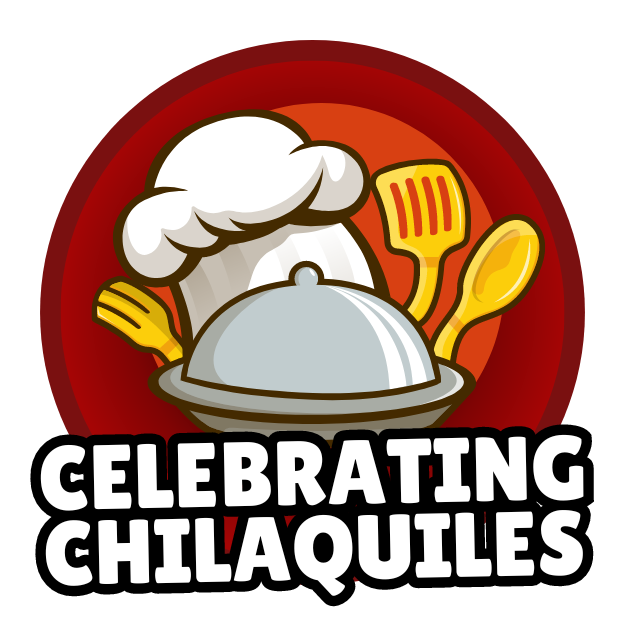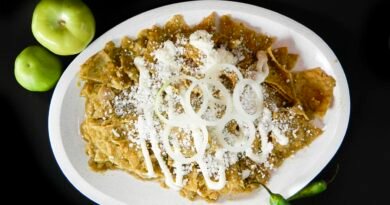Chilaquiles, a staple of Mexican cuisine, are more than just a breakfast dish—they are a culinary tradition that embodies the rich cultural tapestry of Mexico. This simple yet versatile dish has been a beloved part of Mexican kitchens for centuries, offering a comforting and flavorful way to start the day. In this deep dive, we’ll explore the origins of chilaquiles, their cultural significance, variations across regions, and tips on how to make the perfect plate at home.
The Origins of Chilaquiles
The word “chilaquiles” comes from the Nahuatl language, spoken by the Aztecs, and is roughly translated as “chilis and greens.” This ancient dish likely evolved from a way to use up stale tortillas, a practice that is still common in many Mexican households today. The base of chilaquiles consists of lightly fried or baked corn tortillas, cut into quarters or strips, and simmered in a sauce made from red or green chiles.
Chilaquiles have long been considered a dish of the people, simple to make yet full of flavor. In Mexico, they are traditionally eaten as a breakfast dish, often served with eggs, beans, or meat, and accompanied by a generous helping of crema, cheese, and fresh herbs.
Cultural Significance
Chilaquiles are more than just food—they are a reflection of Mexico’s history and culture. The dish is a testament to the resourcefulness of Mexican cooks, who have always found ways to create delicious meals from humble ingredients. Celebrating Chilaquiles are also a symbol of comfort and nostalgia, often evoking memories of family gatherings and home-cooked meals.
In many Mexican households, chilaquiles are a Sunday morning tradition, a dish that brings the family together around the breakfast table. They are also a popular choice for curing a hangover, with the spicy chiles and hearty tortillas providing a much-needed boost after a night of festivities.
Regional Variations
Like many traditional Mexican dishes, chilaquiles vary greatly depending on the region. The most common variation is between the sauce used—red or green. In the northern states, red chilaquiles, made with a sauce of dried red chiles, tomatoes, and spices, are more popular. In contrast, green chilaquiles, made with a sauce of tomatillos, green chiles, and cilantro, are favored in central and southern Mexico.
In some regions, chilaquiles are served with a variety of toppings, including shredded chicken, chorizo, or even steak. In others, the dish is kept simple, with just the tortillas and sauce. Some cooks prefer to bake the tortillas for a lighter, crispier texture, while others fry them for a more traditional, chewy consistency.
In Mexico City, chilaquiles are often served with a side of refried beans and topped with a fried egg, while in Oaxaca, they might be garnished with crumbled queso fresco and a drizzle of crema. In the Yucatán, a region known for its unique culinary traditions, chilaquiles are sometimes made with a sauce of achiote, giving them a distinctive red color and earthy flavor.
Making Chilaquiles at Home
While chilaquiles may seem simple, achieving the perfect balance of flavors and textures can be an art. Here are some tips to help you make delicious chilaquiles at home:
- Choose Your Tortillas Wisely: For the best chilaquiles, use day-old corn tortillas. Fresh tortillas can be too soft and will turn mushy when simmered in the sauce. If you only have fresh tortillas, you can let them sit out for a few hours to dry out slightly.
- Fry or Bake the Tortillas: Depending on your preference, you can either fry the tortillas in oil for a traditional texture or bake them for a lighter version. If frying, heat the oil until it’s hot but not smoking, and fry the tortillas in batches until they are golden and crispy. If baking, spread the tortillas on a baking sheet, drizzle with a little oil, and bake at 350°F until crisp.
- Perfect Your Sauce: The sauce is the heart of the chilaquiles, so take the time to get it right. Whether you prefer red or green, the key is to balance the flavors of the chiles with the acidity of the tomatoes or tomatillos. For red chilaquiles, blend dried red chiles with roasted tomatoes, garlic, and onion, then simmer the sauce until it thickens slightly. For green chilaquiles, blend roasted tomatillos with green chiles, cilantro, garlic, and onion, then simmer as you would for the red sauce.
- Simmer, Don’t Soak: Once your tortillas are fried or baked and your sauce is ready, the final step is to combine them. Pour the sauce over the tortillas and simmer gently for a few minutes, just until the tortillas start to soften. Be careful not to let them sit too long in the sauce, or they will become too mushy.
- Customize with Toppings: One of the best things about chilaquiles is how customizable they are. Add your favorite toppings, such as a fried egg, crumbled queso fresco, sliced avocado, or a dollop of crema. Fresh herbs like cilantro and a squeeze of lime juice can add a bright, fresh flavor that complements the richness of the sauce.
Chilaquiles in Modern Cuisine
While chilaquiles are deeply rooted in tradition, they have also found a place in modern Mexican cuisine. Chefs across the country and beyond have embraced the dish, putting their own spin on it and elevating it to new heights. In trendy Mexico City eateries, you might find chilaquiles topped with gourmet ingredients like duck confit or served with a side of truffle-infused beans.
Chilaquiles have also gained popularity outside of Mexico, particularly in the United States, where they are often featured on brunch menus in Mexican and Tex-Mex restaurants. This international popularity has led to new interpretations of the dish, from vegan versions made with tofu and plant-based cheese to chilaquiles casseroles that are perfect for feeding a crowd.
Conclusion
Chilaquiles are more than just a meal—they are a celebration of Mexico’s culinary heritage. Whether you enjoy them for breakfast, brunch, or any time of day, chilaquiles offer a delicious and comforting way to experience the rich flavors and traditions of Mexican cuisine. Whether you stick to the classic red or green versions or experiment with new flavors and toppings, chilaquiles are sure to become a favorite in your kitchen.
1. What are chilaquiles?
Chilaquiles are a traditional Mexican breakfast dish made from lightly fried or baked corn tortillas, cut into quarters or strips, and simmered in a sauce made from red or green chiles. They are typically served with various toppings like eggs, beans, cheese, crema, and fresh herbs.
2. Where did chilaquiles originate?
Chilaquiles have ancient origins in Mexico and are believed to have evolved as a way to use up stale tortillas. The name “chilaquiles” comes from the Nahuatl language, spoken by the Aztecs, and roughly translates to “chilis and greens.”
3. What is the difference between red and green chilaquiles?
Red chilaquiles are made with a sauce of dried red chiles, tomatoes, and spices, while green chilaquiles are made with a sauce of tomatillos, green chiles, and cilantro. The choice between red or green often depends on regional preferences or personal taste.
4. How are chilaquiles traditionally served?
Chilaquiles are typically served for breakfast, often accompanied by eggs, refried beans, and a variety of toppings such as crumbled queso fresco, sliced avocado, crema, and fresh herbs. They are also popular as a hangover cure.
5. Can I make chilaquiles with fresh tortillas?
While you can use fresh tortillas, it’s better to use day-old tortillas for the best texture. Fresh tortillas can become too soft and mushy when simmered in the sauce. If you only have fresh tortillas, you can dry them out slightly by leaving them uncovered for a few hours.




